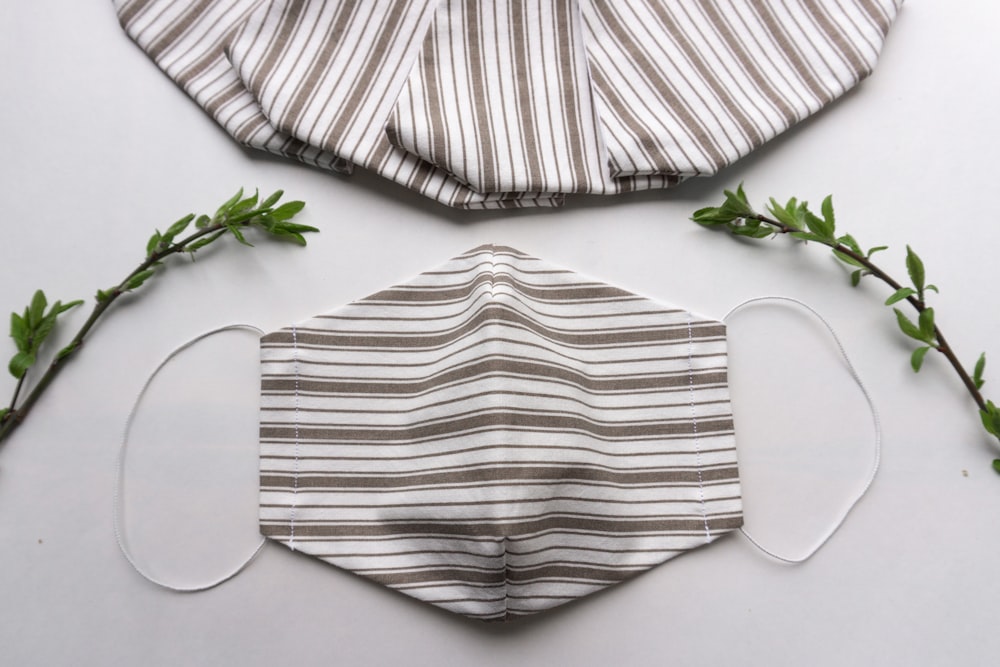Here’s Why Your Reusable Mask is So Important
How to protect your community (and the planet!)

There’s no getting around it. COVID-19, also known as novel coronavirus, will be prevalent in our world for quite some time. And as the US Centers for Disease Control and Prevention (CDC) have stated, the best methods for prevention are through washing your hands, practicing social distancing, and perhaps most importantly, wearing a mask in public settings.
And, while preventing the spread of COVID-19 has become a big part of our everyday routine, it may also have huge ramifications on our planet. In fact, a recent study in the Environment, Science & Technology journal estimated that 129 billion face masks and 65 billion gloves are being used globally each month.
Nick Mallos, a senior director with the nonprofit organization Ocean Conservancy, in an interview with CNN, called these numbers “staggering,” as disposable plastic PPE poses a huge problem for the natural environment when they’re discarded.
Here’s what you need to know about protective masks, and which one is right for both you and the planet.
Why the insistence on masks?
One of the main ways that COVID-19 is spread from person to person is through the airborne transmission of respiratory droplets. In other words, it’s the tiny particles of spit that fly out of our mouths when we talk, laugh, sing, yell, cry, sneeze, or cough.
Since it’s possible to be infected with the coronavirus without knowing it, it’s important to wear masks in public places where we may be less than six feet away (2 metres) from others. This is meant to protect those around us and to keep transmissions as low as possible.
While wearing a mask whenever we leave the house is good practice, it’s especially important when we may be in small, indoor spaces like shops, buses, and offices—some of the biggest hotspots for possible transmission.
Since the pandemic started, health authorities’ advice and/or mandates on wearing masks has created controversy in some jurisdictions. Yes, masks can be uncomfortable and, during these hot summer months, they can make you a little sweatier than usual.
But we won’t get back to the way things used to be by staying comfortable. Health authorities advise that, while children younger than two years old or individuals who have trouble breathing shouldn’t wear masks, it’s crucial that everyone else does to help slow the spread.
Types of masks
Surgical masks and N-95 masks are used by health care workers to protect themselves and those they care for and aren’t recommended for use by the general public, except by those who’re looking after someone with symptoms of COVID-19.
The most common facial protections being used are disposable non-medical masks, specifically designed to block droplets and provide a physical barrier around your nose and mouth. These masks, however, are only designed to be used once and thrown out after a single day’s use to avoid continuous contact with possible germs from your face and your hands as you don and doff the mask.

Always go with reusable!
While disposable masks are easy to find and relatively inexpensive, for the sake of the planet you may want to think twice before choosing them. Back in May, the French nonprofit group Opération Mer Propre (Operation Clean Sea) which specializes in cleaning up litter and garbage from our oceans, alerted the world about the environmental effects of COVID-19 prevention. Dozens of gloves, hand sanitizer bottles, and surgical masks were found along the Côte d’Azur immediately following the easing of COVID-19 lockdown restrictions in the area.
The United Nations is also speaking out about the growing problem of plastic pollution on our streets, beaches, and oceans in the wake of COVID-19. and is urging global measures to identify non-fossil fuel plastic substitutes.
Cloth masks that can be used and reused after washing are growing in popularity among the general public. They’re easy enough to make yourself, but they’ve also become easier to source online where they’ve become a great fundraising tool for nonprofit groups. They’re also a great way for local designers to help you express your own unique style, so check out your local designers who may have just the right style for you.
If you’re a do-it-yourselfer, check out this information from Health Canada where you can find some great tips on how to make quick DIY masks at home using your own materials like bandanas or t-shirts.
How to wear a mask
Getting a mask is half the battle: we need to make sure it also fits well enough to do its job. To properly wear a mask, make sure it covers your face from the bridge of your nose to under your chin and is attached securely with ties or ear loops.
While it should be loose enough to allow you to breathe easily without gaps, your mask should also be secure enough that it doesn’t easily slip off. Fiddling with a face mask that doesn’t fit well means you might be touching your face more than you should.
How to clean your reusable mask
For cleaning your cloth mask after a day of using it, adding it to your laundry pile in the washing machine works just fine, with regular laundry detergent and warm water. If you prefer to wash by hand, the US CDC recommends soaking it in a bucket with 5 tablespoons (75 mL) of household bleach per gallon of room temperature water for 5 minutes and then rinsing thoroughly in cool or room temperature water. It’s important also to completely dry your mask before wearing it again.
Remember, we wear reusable masks to do our part and help protect those around us, while also striving to keep things sustainable and environmentally friendly. We have a tough battle ahead of us, but through teamwork, positivity, and awareness, we can make things better together.




